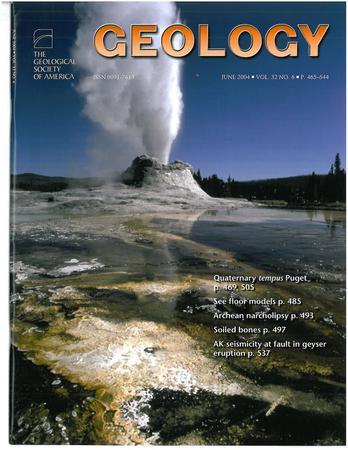中亚造山带南部岩浆流的逸出延长了塔里木地幔柱的寿命
IF 4.6
1区 地球科学
Q1 GEOLOGY
引用次数: 0
摘要
当上升的地幔柱到达小克拉通下方并遇到周围造山带伸展时,可能会发生什么?本文以塔里木地幔柱和中亚造山带南部的基性-超基性侵入为例,探讨了这种情况。该地幔柱到达塔里木克拉通(地球上较小的克拉通之一)下方,持续时间为300 Ma至270 Ma,峰值为290 Ma和278 Ma。与此同时,CAOB处于造山带伸展晚期,古亚洲洋呈剪刀状东扩闭合。镍铜硫化物矿床赋存于基性-超基性侵入体中,通常与地幔柱事件有关。然而,越来越多的镍铜硫化物矿床被认为位于伴生造山环境中,例如与南CAOB有关的矿床。我们观察到,基性-超基性岩体的数量随着离塔里木克拉通(塔里木地幔柱)距离的增加而减少,这些岩体的长度为7 ~ 8 μ m。相对于塔里木克拉通内塔里木大火成岩省岩浆活动的时间(300 ~ 270 Ma),它们的侵位年龄(295 ~ 255 Ma,峰值在293、282和271 Ma)存在时间差。这些不同寻常的年代学和构造联系表明,地幔柱物质沿着与推断的地幔柱圆形边界垂直的南缘伸展带向东北逸出,形成了造山式的镍铜硫化物矿床,并持续从深部地幔供应岩浆,延长了塔里木地幔柱的寿命。本文章由计算机程序翻译,如有差异,请以英文原文为准。
Escape of magma flow along the southern Central Asian Orogenic Belt prolonged the lifetime of the Tarim mantle plume
When an ascending mantle plume arrives beneath a small craton and encounters ambient orogenic extension, what is likely to happen? We explored this scenario through considering the case of the Tarim mantle plume and the mafic-ultramafic intrusions in the southern Central Asian Orogenic Belt (CAOB). This mantle plume, which arrived beneath the Tarim craton, one of the smaller cratons on Earth, lasted from 300 Ma to 270 Ma with peaks at 290 Ma and 278 Ma. Synchronously, the CAOB was at the late orogenic extension stage with an eastward-propagating, scissor-like closure of the Paleo-Asian Ocean. Ni-Cu sulfide deposits hosted in mafic-ultramafic intrusions are typically associated with mantle plume events. However, an increasing number of Ni-Cu sulfide deposits are recognized as being emplaced in an associated orogenic setting, such as those associated with the southern CAOB. We observed that the number of mafic-ultramafic intrusions decreases with increasing distance from the Tarim craton (from the Tarim plume), and these intrusions show a 7−8-m.y. time lag in their emplacement ages (295−255 Ma, with peaks at 293 Ma, 282 Ma, and 271 Ma) with respect to the timing of Tarim large igneous province magmatism (300−270 Ma) within the Tarim craton. These unusual geochronological and tectonic links suggest that the plume materials were escaping to the northeast along an extensional belt in the southern CAOB, which is perpendicular to the inferred circular boundary of the plume, resulting in the formation of orogenic-style Ni-Cu sulfide deposits and a continuous magma supply from the deep mantle, prolonging the lifetime of the Tarim plume.
求助全文
通过发布文献求助,成功后即可免费获取论文全文。
去求助
来源期刊

Geology
地学-地质学
CiteScore
10.00
自引率
3.40%
发文量
228
审稿时长
6.2 months
期刊介绍:
Published since 1973, Geology features rapid publication of about 23 refereed short (four-page) papers each month. Articles cover all earth-science disciplines and include new investigations and provocative topics. Professional geologists and university-level students in the earth sciences use this widely read journal to keep up with scientific research trends. The online forum section facilitates author-reader dialog. Includes color and occasional large-format illustrations on oversized loose inserts.
 求助内容:
求助内容: 应助结果提醒方式:
应助结果提醒方式:


